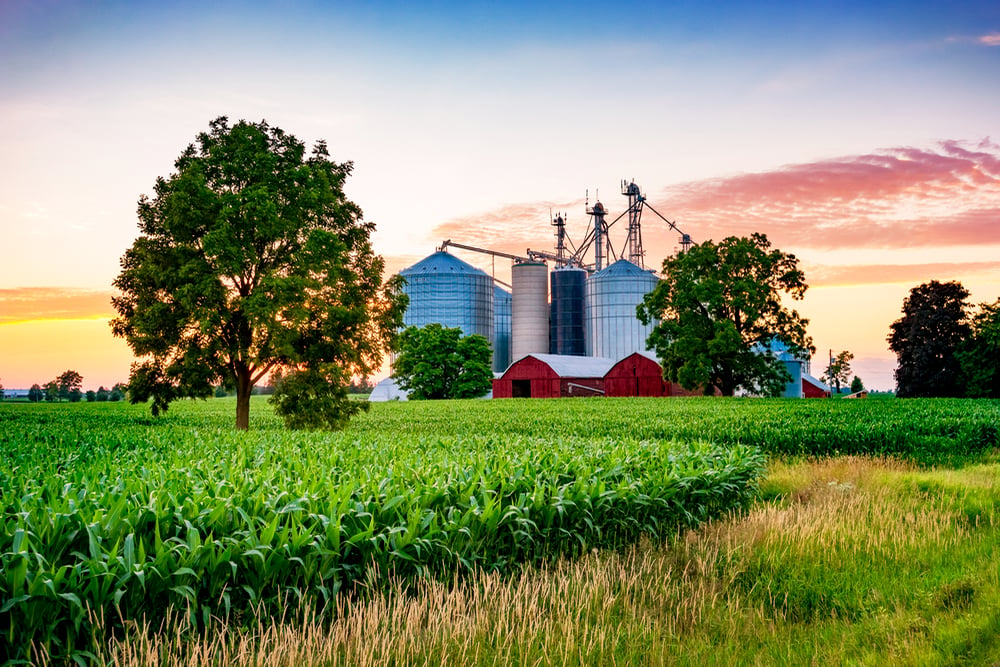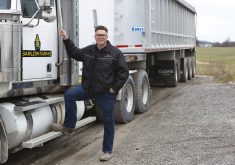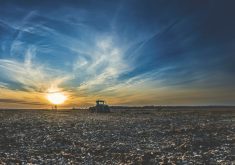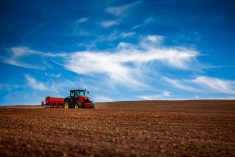There is just one word to describe the value of farmland in Canada: high. Or maybe that should be HIGH. Cultivated farmland across Canada jumped an average 12.8 percent last year, says Farm Credit Canada. It’s the biggest jump since 2014 and part of an upward trend that has seen land values post continuous gains since 1993.
Now the question is, will these double-digit increases continue into 2034? Is that likely, or even possible?
A quick glance at the plummeting prices that dominated the 1980s can shake anyone’s confidence. Dramatic shifts are possible, But that was 40 years ago. The world was different, which is why Country Guide asked market watchers to weigh in on what the next decade could have in store.
Read Also

The wildly adaptable side of next gen agriculture
Some people just fall into the world of agriculture — and consider themselves lucky to have stumbled into such a…
Country Guide: How does the market look heading into winter?

Ben Van Dijk: We’re still seeing strong prices for productive land that can produce good crops. Interest rates have had a bit of an impact on ranchlands and grasslands. These lifestyle properties have seen pressure on prices and fewer sales but premium, irrigated land is still getting high prices and the value keeps going up.
CG: Do you see the upward trend in the value of productive land continuing into the next decade?
BVD: I believe so. Ever since the Second World War, there has been an increasing market for farmland … and better farmland means better crops and an increased (farmland) value can be justified based on inflation and yield potential. The continued pressure from urbanization and more farmland that’s located near large population centres being purchased has put pressure on farmland and increased its value … I expect to see an annual average of seven to 7.5 per cent price increases for farmland.
CG: Will farmers keep buying?
BVD: Yes. There are a variety of reasons why farmers are still purchasing land right now: If the prices go up, it gives them more equity to leverage for more land. Having more land also enhances their operation by allowing them to expand into specialty crops or improve crop rotations and it makes their equipment more useful across the whole operation.
Some farmers are also buying because their rented land has passed down to the next generation and been put up for sale, and their option is to purchase it or lose access to it.
CG: So land won’t become unaffordable?
BVD: A lot of farms have become big business. It used to be that farmers borrowed a couple hundred thousand dollars or half a million dollars and paid it back within their lifetime. Now, many operations take on $20-, $40- or even $60 million in debt and don’t expect to repay it during their lifetime, and those larger farms that operate as corporations will continue purchasing.
CG: What should farmers do now, based on your prediction that the value of farmland will continue to rise?
BVD: We’re seeing a lot of estates being sold and land coming available that hasn’t been on the market for generations and that land can provide significant returns. In the hot areas, irrigated land values are around $25,000 per acre; if there is seven per cent return, you’ll almost double the value in the next 10 years. In my opinion, there is no better place to put your money than land.
CG: Explain why the current value of Canadian farmland is problematic.
J. P. Gervais: What makes farmland so expensive right now isn’t just the price per acre; it’s interest rates and the revenue that farmers are getting from that land that’s made the price of farmland the highest it’s ever been. Farm income hasn’t matched the increase in land values. Across the country, coast to coast, we are at a high when it comes to the price of land relative to what you could grow.
CG: What does this mean for farmland values in the future?
JPG: Looking to the future, I don’t think we can expect land values to continue going up and exceeding the pace of increases in farm income; it’s not sustainable. But that doesn’t mean that land values are going to decline.
People point to what happened in the 1980s and 1990s when we had a lot of farms under financial stress and farmers had to sell their land. I think the future is different — and what’s different is how Canada has a unique position as a small and mighty exporter of commodities with a major role in supplying the food that the world needs in a sustainable way. The reason land values are so high right now is that the future looks bright.
CG: Does this mean we’ll see steady increases in farmland values between 2024 and 2034?
JPG: Farming is a cyclical industry and land values are also cyclical. But it’s hard not get excited about the positive long-term outlook — the 10-year outlook — because farmers will continue buying land and the demand for what they grow is going to remain robust, so there is a bright future.
CG: What does the projected increase in farmland values mean for farmers?
JPG: I think we’re squeezing out the mid-size farms. The data (from the 2021 census) suggests we’ve got a number of small farms that are providing specific products to the market for those who want food that is local or sustainable as opposed to being produced on a larger scale.
But scale matters in the farming industry because it’s a highly capital-intensive industry. There are some concessions that farmers can make like farming with more technology, but this is literally a job that cannot be done without the ground. So, how do our farmers keep up (with farmland values)? They have to go more into debt.
CG: How are farmers feeling about the future of land values?
JPG: Some operations are a bit more cautious and, with current interest rates, I don’t blame them. Farmers want to own land; they want to farm it, lease it, hold onto it because they still see value in the asset. At the end of the day, it’s the asset the entire farming industry farming relies on, and that demand makes it very resilient to any type of fluctuations — and that means (farmland values) have a pretty bright future.
CG: How do you see farmland values changing over the next decade?
Kim Passmore: The pool of buyers, particularly for farmland, needs to be top of mind over the next decade. It’s not just farmers buying farmland. Nationwide, farmland consistently outperforms other investments, attracting non-farmers, investors, private equity funds and speculators, and that can drive up values. Between the growing population, pressure to expand urban boundaries to meet housing demand and increasing global concerns around food security, we should continue to see increases in farmland values over the next decade.
CG: How will this affect farmers’ ability to start farming or purchase land?
KP: The strong market conditions over the last decade have certainly favoured the asset-rich, larger, consolidated operator. They were more nimble and able to make quick decisions at a short-term premium with a more long-term vision for their operations’ growth.
Farming is a capital-intensive industry and the anticipated rise in farmland values will make affordability for small or new farmers even more challenging. Inheriting land from previous generations will become increasingly crucial.
CG: What must farmers keep in mind?
Brandon Wilcox: Farmers still need to bite if a parcel comes available close to the home farm or if expansion is a part of their growth plan. Typically, farmers strategize for the long game … and will still purchase what’s best for their family farm.
Farmers often say, “I wish I bought more land or got in the game sooner.” Farming will not disappear, and it certainly has never been easy, so we need to evolve and find crafty ways to be successful.
– This article was originally published in the November 2023 issue of Country Guide.
















